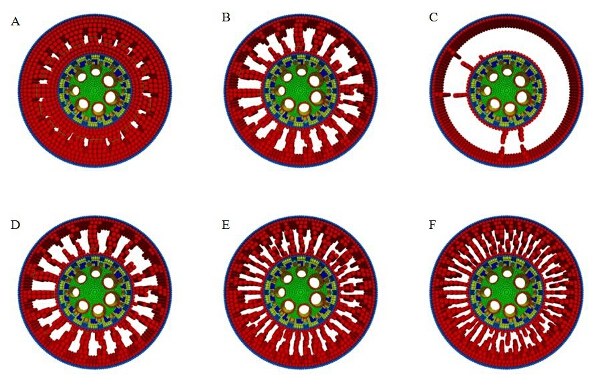The anatomical structure of roots has been shown to have effects on plant physiological processes but root anatomy has not been explicitly considered in functional-structural root models... until now.

RootSlice simulation showing a maize root cross section with an intermediate level of aerenchyma
Background
Root phenes, such as architectural, morphological and anatomical phenes, affect the metabolic cost of soil exploration. Though the anatomical structure of roots has been shown to have effects on plant physiological processes, root anatomy has not been explicitly considered in functional-structural root models. Cortical tissue occupies a large proportion of the cross-sectional area of a root segment and determines its diameter. Properties of the root cortex show a large degree of variation among genotypes and are influenced by the environment
Objective
We wish to measure the effect of anatomical variation of root cortex, including variation in cell size, number of cell files in the radial direction, percentage of aerenchyma, cell wall thickness, amount of cytoplasm and vacuole size, on the efficiency of soil exploration. Exploration and acquisition efficiency will be influenced by root anatomy through respiration and construction costs and radial water transport.

Simulation of root cross-section in response to the changes of RCA ratio and RCA number
Implementation
The RootSlice model was written in the C++ programming language. Model visualization was done with the Visualization Toolkit with final images rendered with ParaView.

